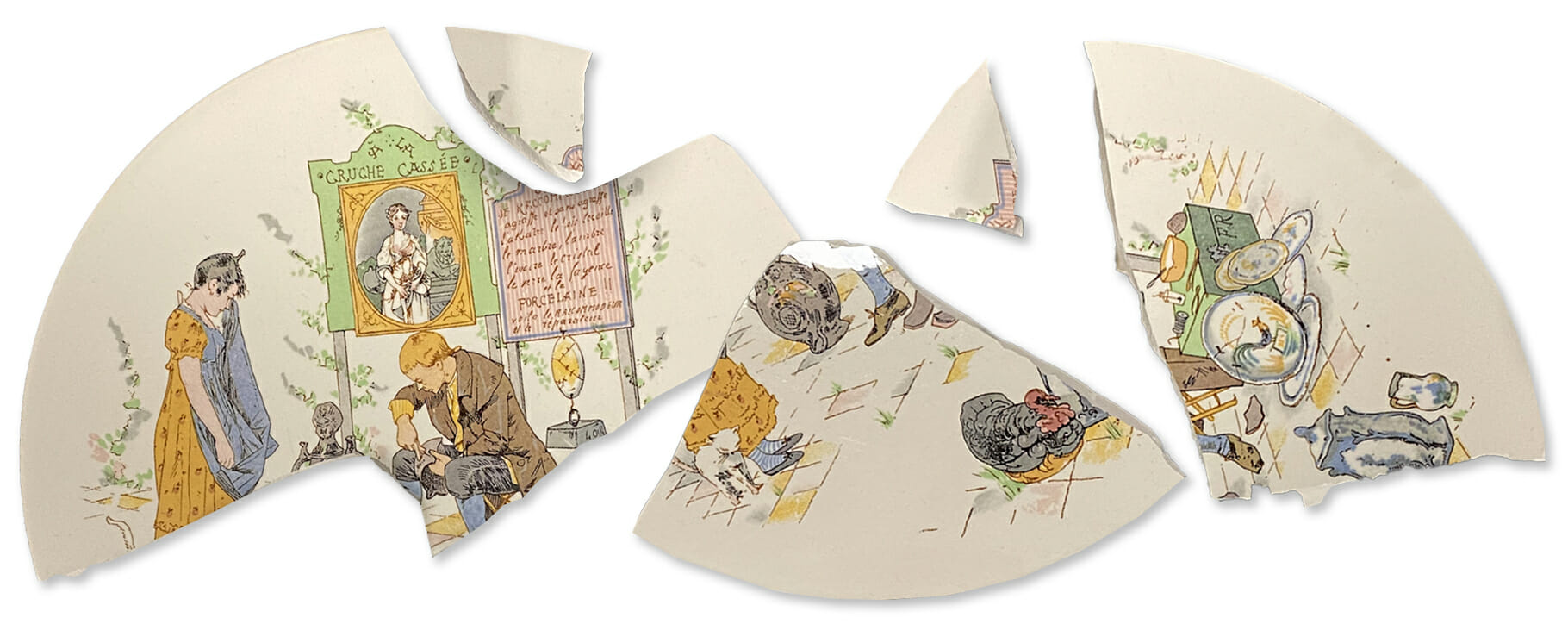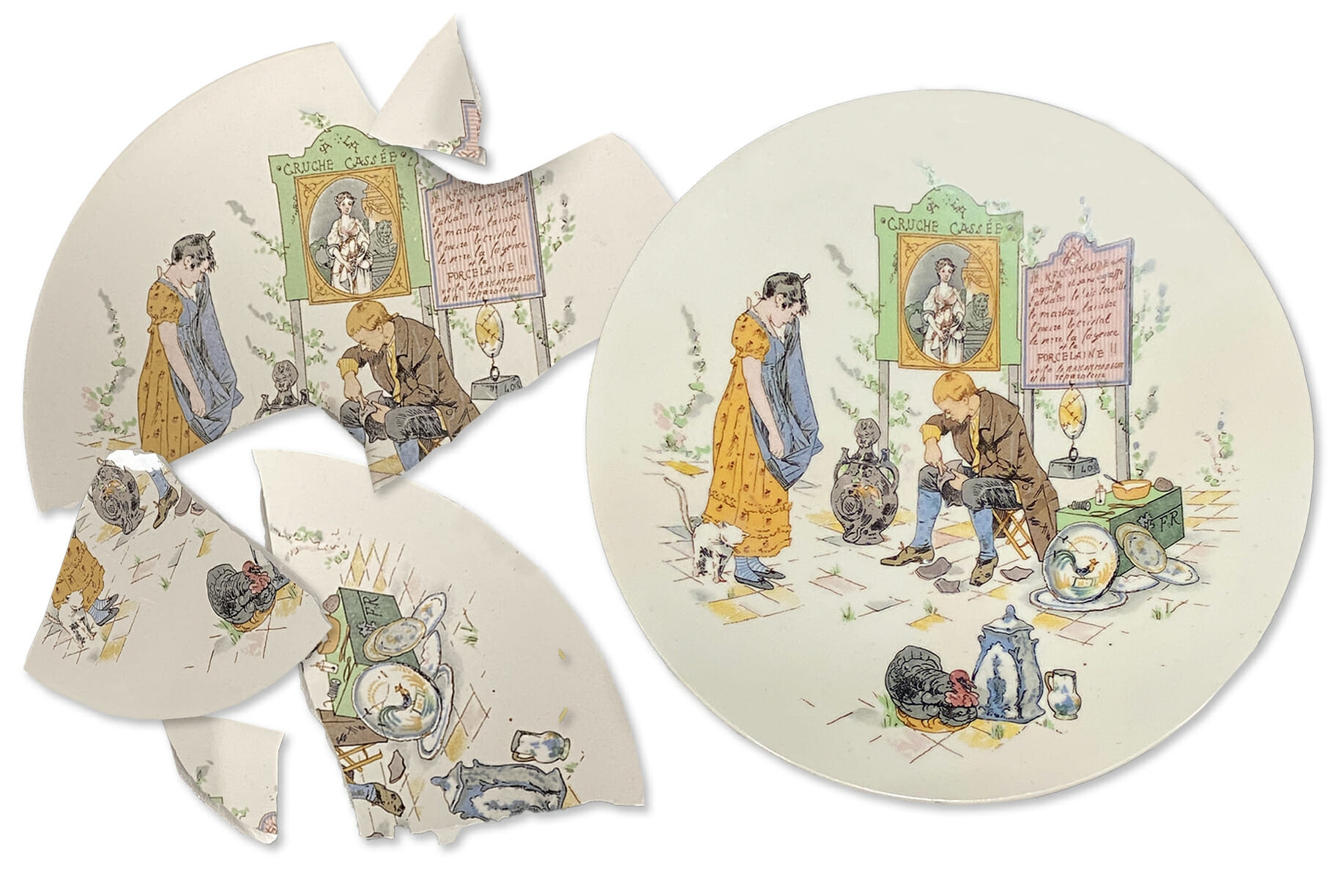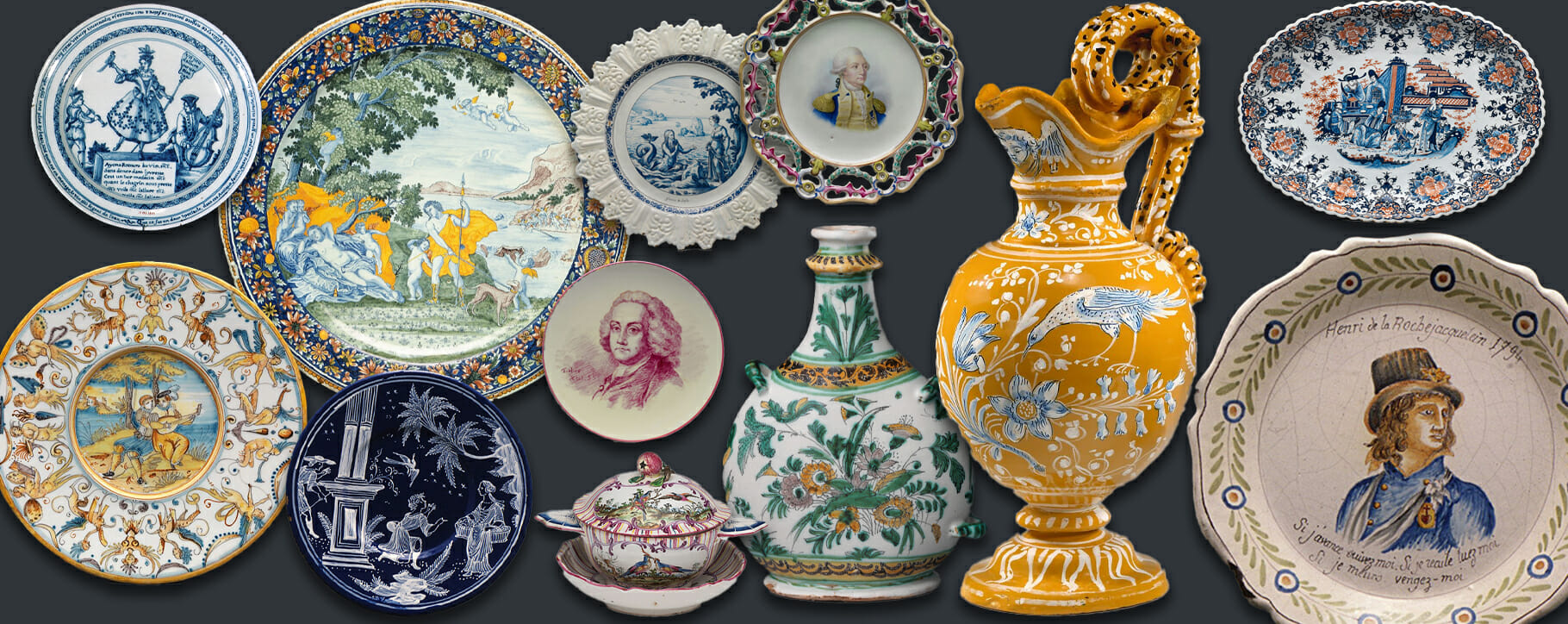Our clients often approach us with their most treasured possessions following an accident or disaster, with many items holding deep personal meaning to a family or individual. This is why each painting, ceramic or piece of furniture that graces our studio is treated with the utmost care, whether their value is sentimental or monetary.

Some stories stay with our team as the poignancy is carried with them throughout the restoration process. This is the story of a faience dish that held great importance to a husband and wife who came to us due to a devastating breakage. The plate was one of the only objects that our client’s wife consistently remembered since being diagnosed with dementia, making it vitally important to their everyday life. The accidental damage had shattered the detailed decoration that had once been so compelling for nostalgia. Our specialist conservator stepped in to ensure the plate was restored with expert precision.
Transferware from Sarreguemines
This late 19th century dish is a form of faience (tin-glazed pottery usually originating from France) that uses a transfer method of decoration. Quite ironically, this dish depicts a ceramics repair shop with a list of the available services and a distraught customer. The piece dates to around 1890 and was produced by Sarreguemines manufactory who famously produced the tiles that decorate the Paris Metro in 1838. This style of illustrated plate is a quintessentially faience in style, Sarreguemines in particular is known for its comical illustrations such as their satirical series depicting the French foreign legion.
 Above: a selection of faience plates and vases from various centuries
Above: a selection of faience plates and vases from various centuries
The illustration of the ceramics repairman includes numerous hints of humour and innuendo within its scene. The sign on the left of the figures reads ‘a la creuche cassee’ – the broken jug, a famous painting by Jean-Baptiste Greuze that is shown below the text. This painting is typically seen as being symbolic of lost innocence, a suggestive theme that is carried into the rest of the illustration as the female customer tries desperately to have her treasured porcelain repaired, albeit with his very obvious staples.
Restoring the shattered plate
In the illustration, the repairman uses a historic restoration technique, stapling the fragments back together in a traditional way. He advertises his repairs as being so strong that they can hold a heavy weight – certainly not a test our conservators would recommend! Luckily, restoration techniques have moved on – our team is focused on conservation above all else, using museum-level training and treatments to provide a safe and near seamless finish.

In this case, the broken pieces were gently cleaned by our conservator and the edges were prepared to be bonded with a conservation solution. Unlike household glues, conservation adhesives do not become yellow and they do not contain harmful chemicals that could deteriorate the ceramic further. Our team often finds that ceramics that have been fixed in the past with superglue or sticky tape have become heavily stained and damaged, so we never recommend home repairs. Instead, all pieces should be collected – no matter how small – to be reconstructed through professional restoration. Our team always uses as many original pieces as possible, this ensures historic or artistic integrity and in this case the personal value of the object.
The plate was bonded back together perfectly and once it was set in place, our ceramics expert stabilised any losses around the breakages and re-touched any missing colour with sympathetic amounts of pigment. The result revived the dish, returning it to its original state with no sign of prior damage. This was important to its function as a personally significant item in our client’s home. Our team was glad to be a part of this restoration journey.

How can we help?
If you have a treasured item that is in need of professional care, please contact our helpful team who will be happy to assist further.
If you have any queries or would like to find out more about art conservation, please get in touch. Email us via [email protected] or call 0207 112 7576

 Above: a selection of
Above: a selection of 




